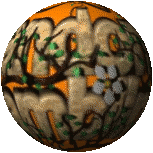So many of our trees produce catkin flowers and this year they have all appeared to be full-stretched a few weeks earlier than usual. The main varieties are Alder, Birch, Hornbeam and Hazel all of which have several varieties within their families. Whilst walking around the lake I came across a most unusual catkin. It was fat, long, grey and fluffy. I have since been researching trying to find out the name of the tree with this beautiful lamb tail … You would think with all of the reference books available and the ever growing resource of the Internet that finding the name of something would take but a few moments. Wherever I looked there was not one reference to this catkin. I am not one for giving up and so ventured into book shops where I looked through further books and then I found one picture reference with the identical catkin with the exception that it wasn’t grey.
The detective in me continued searching and although I have now found what I believe could be the name of the tree that produces the ‘fat furry catkin.’ What is surprising is that tree specialists list different facts and descriptions for this tree and its flowers (the male long catkins and the female short catkins).
The tree that produces ‘fat furry catkins’ is the Downy Birch, Latin name: Betula pubescens. It is native to both Europe and North Asia – height is listed from 21 to 25 metres depending upon source. Bark is smooth and grey, may be brown or white and peeling like paper also depending upon source. Leaves are similar to the Silver Birch but have rounded bottoms towards the stems. This tree does very well and spreads rapidly in areas of woods or forests that have been cut back or burnt. As with other birch the Downy Birch provides a home to many insects and is especially occupied by moths.
Downy Birch with soft furry grey male catkins


















































2 comments:
good job of investigating. I also found while looking for answers that different sites/resources had different answers. So how are you supposed to know who is right
I love the catkins. They are neat. And yes you can get different descriptions from different sites. It might be just a slightly different species.
Post a Comment